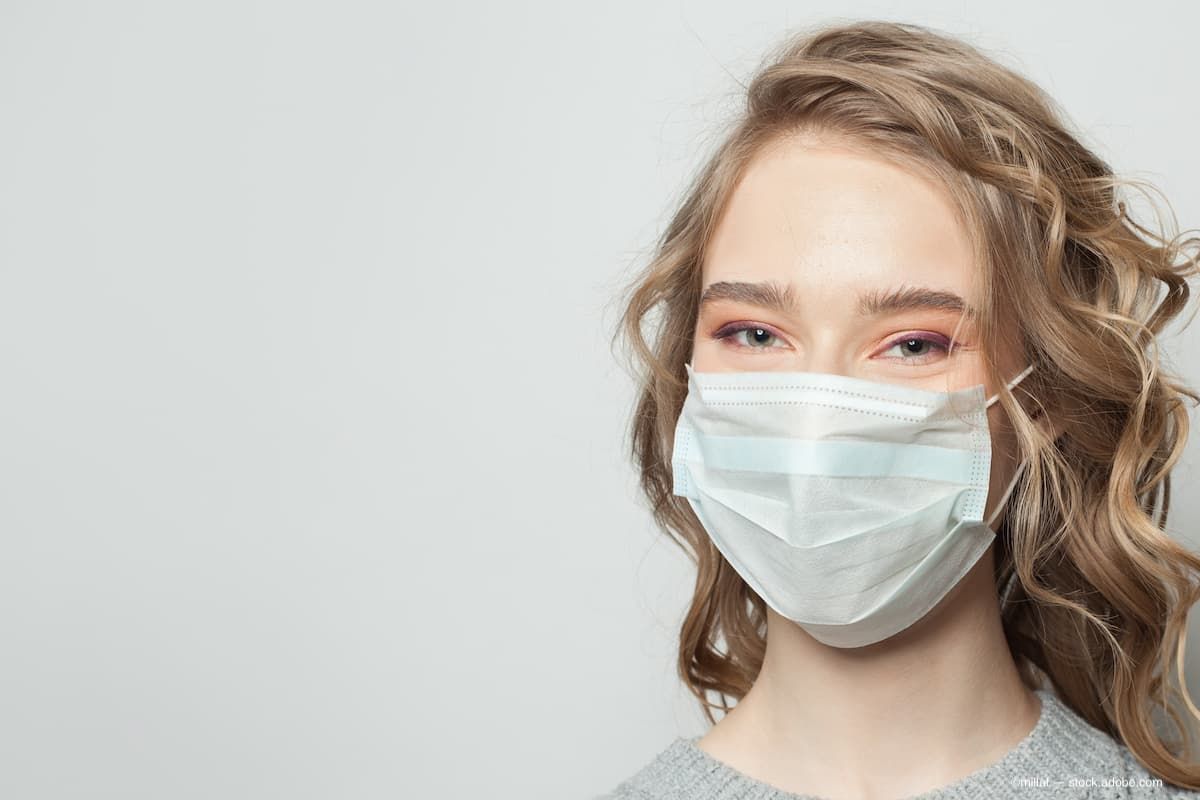News
Article
Possible role of face masks in increased incidence of infectious keratitis after PRK during COVID
Author(s):
Researchers conducted a retrospective chart review spanning from January 2015 to January 2021 to compare the incidence rates of infectious keratitis before and during the pandemic among PRK patients.
(Image Credit: AdobeStock/millaf)

The use of face masks during the COVID-19 era may be responsible for a spike in the incidence rate of infectious keratitis following PRK, according to Mohammad Soleimani, MD and colleagues. He and his colleagues reported their findings during the American Society of Cataract and Refractive Surgery annual meeting in Boston.1 Soleimani is from the University of Illinois at Chicago.
The investigators carried out a retrospective chart review of patients who underwent PRK and were diagnosed with infectious keratitis before and during the COVID-19 pandemic. The time of the study ranged from January 2015 to January 2021. The goal was to determine if the incidence rate of the infection increased during the pandemic.
The pre-COVID time frame used by the investigators was January 2015 to February 2020 and the pandemic era was defined as February 2020 to January 2021.
Infectious keratitis developed in a total of 47 patients after they underwent PRK. Of those, infectious keratitis developed in 22 patients before the onset of COVID and in 25 during the pandemic, the authors reported.
The data analysis showed the following. The rate ratio for infectious keratitis after PRK was 5.68 during COVID-19 (confidence interval [CI], 3.20 to 10.07, p < 0.001). The odds ratio for cases of infectious keratitis after PRK to all cases of the disease was 9.00 during COVID-19 (CI, 5.05 to 16.05, p < 0.001). A sub-analysis of the patients with infectious keratitis who had undergone PRK in Farabi Eye Hospital, Tehran University of Medical Sciences, showed a risk ratio of infectious keratitis after PRK of 9.11 during COVID-19 (95% CI limit, 2.28 to 36.46, p = 0.005).
The investigators concluded, “The rate of infectious keratitis after PRK increased during the COVID-19 pandemic. This may have been due to the increased use of face masks in this era.”
Conference Abstract or Poster
Soleiman M, Baharnoori SM, Allison Y, DjalilianAR. Face masks may play role in increased rate of infectious keratitis after PRK in the COVID-19 era. Paper presented at: American Society of Cataract and Refractive Surgery 2024 annual meeting; April 5-8, 2024; Boston, Massachusetts, USA. Session: SPS-120 Refractive Complications.
Newsletter
Don’t miss out—get Ophthalmology Times updates on the latest clinical advancements and expert interviews, straight to your inbox.

Companies announce presentations at upcoming 2025 ARVO Annual Meeting



